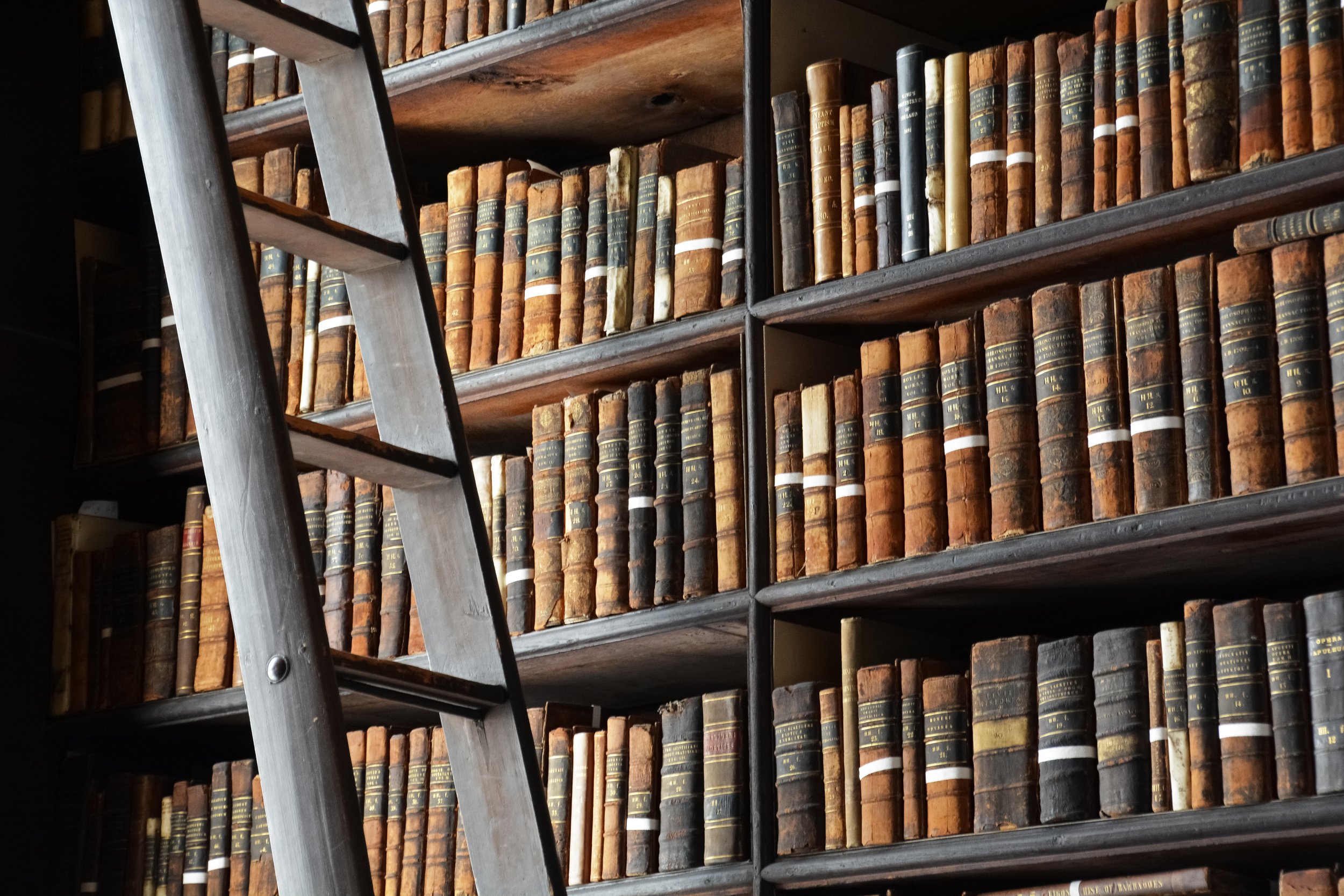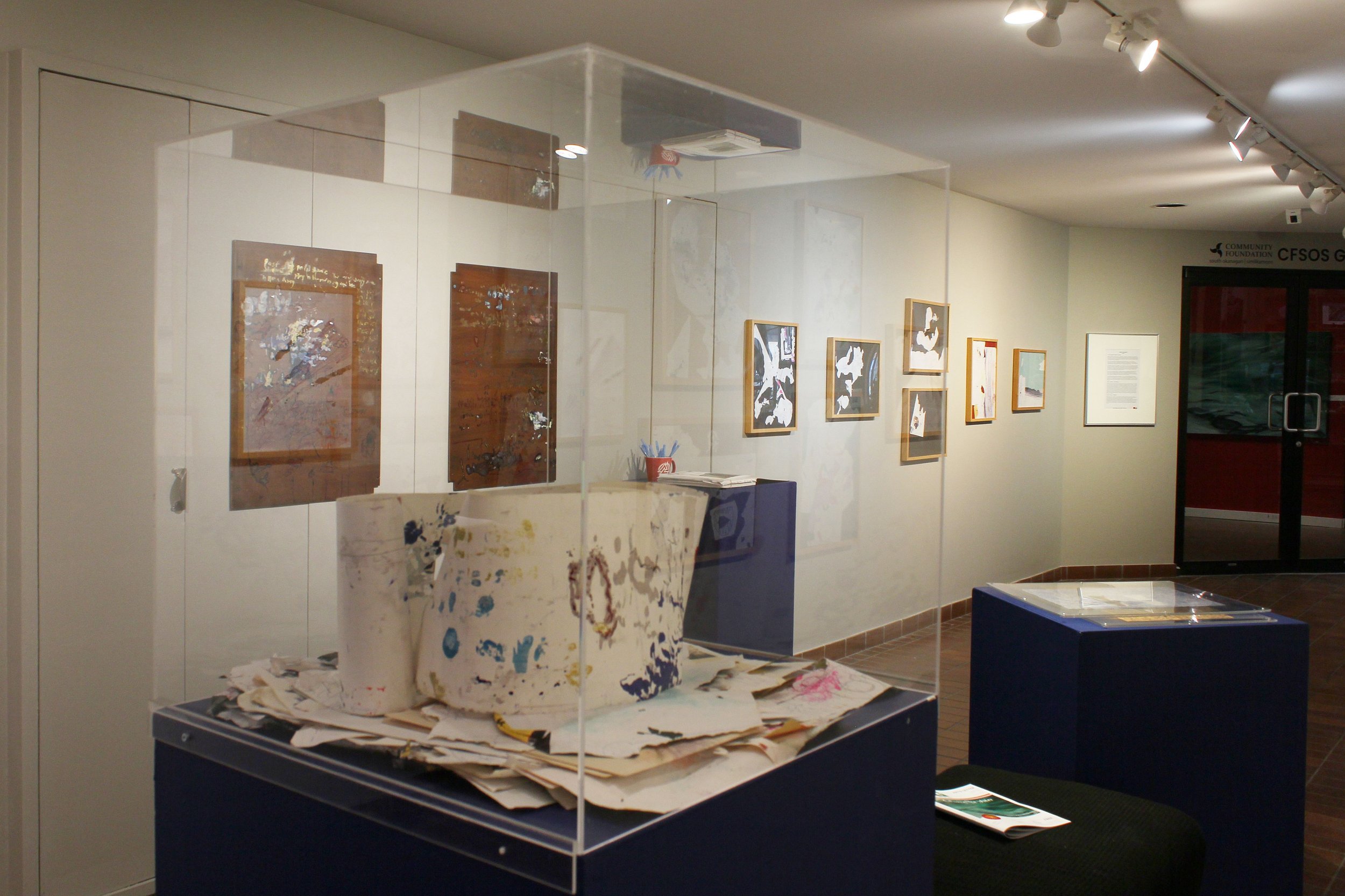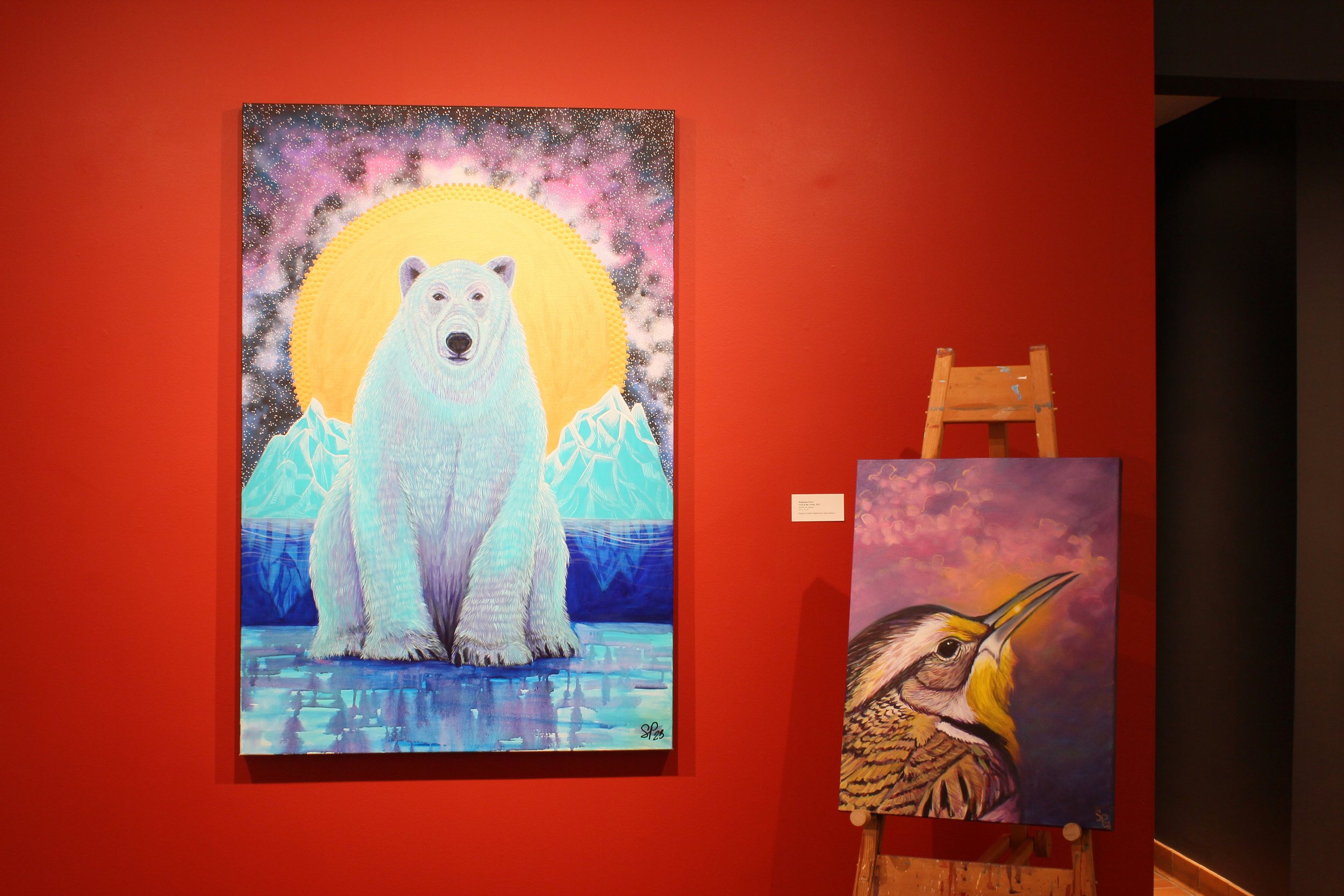
Exhibition archive
Witness To Wonder: SD67 Highschool Exhibition
In anticipation of our most significant event of the year, The Project Gallery will showcase an incredible selection of curated artworks. Peruse over a hundred unique pieces by artists such as Anthony Thorn, Garnet Tobacco, and many more. Online bidding runs May 10th - June 18th, with bids closing during the Soirées live auction.
The 47th Annual Fundraising Auction and Dinner on June 19th is a celebration of art, community, and culinary creativity. This highly anticipated event begins at 5:30 PM, giving guests the opportunity to mingle and preview an extraordinary collection of items up for bid. Dinner will be served just after 6:00 PM, offering an exquisite dining experience in a warm and welcoming atmosphere.
Chef Tyson Still and his team at Still Foods will delight your palate with a menu that celebrates local, seasonal ingredients. As you enter you will be created with a selection of gourmet appetizers and canapés that showcase Tyson’s imaginative plant-based cuisine and the bounty of our region which will be followed by dinner and topped off with an incredible selection of desserts.
The Artful Soirée is all about inclusiveness and fun "no dress code required." Feel free to come as you are, whether in jeans or dressed up for the occasion. The most important thing is your generosity of spirit. Enjoy mingling with old friends, meeting new ones, and participating in an evening where art and conversation flow as smoothly as the local wines. It’s a relaxed, welcoming atmosphere focused on connection and support for the gallery’s mission.
The Artful Soirée is more than just another fundraising gala—it's a celebration of the Penticton Art Gallery’s vital role and the transformative power of the arts in our community. 100% of the proceeds from this event directly support the gallery’s ongoing exhibitions, as well as our educational and outreach programs. Your presence helps fuel the gallery’s ability to bring in exhibitions from artists across Canada and beyond, while also supporting and uplifting our region’s arts ecosystem. In essence, every dinner ticket and each bid becomes "a brushstroke of generosity," strengthening our creative community. By participating, you help ensure the gallery can continue to inspire both residents and visitors, forging meaningful connections through the arts.
Please join us for this unforgettable evening: experience the gallery in a whole new light, indulge in exceptional food, and take pride in supporting an institution that fosters creativity, connection, and culture for all. Your presence not only sustains the gallery but also strengthens our entire arts community here in Penticton, ensuring that future generations will continue to be inspired, engaged, and connected through the transformative power of the arts.
The Artful Soiree: 47th Annual Art Auction Preview
In anticipation of our most significant event of the year, The Project Gallery will showcase an incredible selection of curated artworks. Peruse over a hundred unique pieces by artists such as Anthony Thorn, Garnet Tobacco, and many more. Online bidding runs May 10th - June 18th, with bids closing during the Soirées live auction.
The 47th Annual Fundraising Auction and Dinner on June 19th is a celebration of art, community, and culinary creativity. This highly anticipated event begins at 5:30 PM, giving guests the opportunity to mingle and preview an extraordinary collection of items up for bid. Dinner will be served just after 6:00 PM, offering an exquisite dining experience in a warm and welcoming atmosphere.
Chef Tyson Still and his team at Still Foods will delight your palate with a menu that celebrates local, seasonal ingredients. As you enter you will be created with a selection of gourmet appetizers and canapés that showcase Tyson’s imaginative plant-based cuisine and the bounty of our region which will be followed by dinner and topped off with an incredible selection of desserts.
The Artful Soirée is all about inclusiveness and fun "no dress code required." Feel free to come as you are, whether in jeans or dressed up for the occasion. The most important thing is your generosity of spirit. Enjoy mingling with old friends, meeting new ones, and participating in an evening where art and conversation flow as smoothly as the local wines. It’s a relaxed, welcoming atmosphere focused on connection and support for the gallery’s mission.
The Artful Soirée is more than just another fundraising gala—it's a celebration of the Penticton Art Gallery’s vital role and the transformative power of the arts in our community. 100% of the proceeds from this event directly support the gallery’s ongoing exhibitions, as well as our educational and outreach programs. Your presence helps fuel the gallery’s ability to bring in exhibitions from artists across Canada and beyond, while also supporting and uplifting our region’s arts ecosystem. In essence, every dinner ticket and each bid becomes "a brushstroke of generosity," strengthening our creative community. By participating, you help ensure the gallery can continue to inspire both residents and visitors, forging meaningful connections through the arts.
Please join us for this unforgettable evening: experience the gallery in a whole new light, indulge in exceptional food, and take pride in supporting an institution that fosters creativity, connection, and culture for all. Your presence not only sustains the gallery but also strengthens our entire arts community here in Penticton, ensuring that future generations will continue to be inspired, engaged, and connected through the transformative power of the arts.
George Traicheff: Diversity
Raghu Lokanathan’s creative practice is a meditation on materiality, transformation, and impermanence. Over the past 20 years, his artistic journey has taken him from singer-songwriter to playwright, actor, and, most recently, visual artist. Over this time, he has taken on the role of cultural anthropologist, approaching his creative practice as a space for inquiry, layering different disciplines to explore the naturally evolving nature of objects, stories, and identities.
His work increasingly draws its inspiration from the discarded remnants of a society fueled by consumerism, convenience, and disposability. Through these cast-off fragments, he seeks meaning, understanding, and connection, exploring the trace DNA of our collective presence, though language and mark making while creating space for reflection, interpretation and understanding.
At the heart of his practice is an engagement with decomposition, both literal and metaphorical. Blending his interests in literature, mythology, text, and mark-making, he examines what is lost, what lingers, and what transforms over time. Found objects, often discarded, overlooked, or abandoned, become focal points for reflection and experimentation, raising questions about memory, value, and impermanence. Through these materials, he reveals the tension between permanence and decay, tracing how meaning shifts as objects pass through different hands, places, and histories.
By working with discarded materials, Lokanathan challenges assumptions about waste and worth. His process, tracing, sketching, arranging, and performing, is open-ended, reflecting the fluid nature of meaning itself. Through mark-making and text, both real and imagined, he explores how time, touch, history, memory, and interaction shape materials and ideas alike. The result is a body of work that resists finality, embracing the constant state of change inherent in both art and life.
This exhibition presents and frames Lokanathan’s work as an act of slow observation, providing an invitation to pause, recalibrate, and reconsider the everyday while discovering meaning in what is often discarded or overlooked. Through his explorations and meditations on impermanence, decay, memory, and transformation, he challenges our assumptions about waste and worth, inviting us to observe more closely, engage more deeply with the world around us, recognize value in the ephemeral, and embrace the beauty of change.
Script
Raghu Lokanathan’s creative practice is a meditation on materiality, transformation, and impermanence. Over the past 20 years, his artistic journey has taken him from singer-songwriter to playwright, actor, and, most recently, visual artist. Over this time, he has taken on the role of cultural anthropologist, approaching his creative practice as a space for inquiry, layering different disciplines to explore the naturally evolving nature of objects, stories, and identities.
His work increasingly draws its inspiration from the discarded remnants of a society fueled by consumerism, convenience, and disposability. Through these cast-off fragments, he seeks meaning, understanding, and connection, exploring the trace DNA of our collective presence, though language and mark making while creating space for reflection, interpretation and understanding.
At the heart of his practice is an engagement with decomposition, both literal and metaphorical. Blending his interests in literature, mythology, text, and mark-making, he examines what is lost, what lingers, and what transforms over time. Found objects, often discarded, overlooked, or abandoned, become focal points for reflection and experimentation, raising questions about memory, value, and impermanence. Through these materials, he reveals the tension between permanence and decay, tracing how meaning shifts as objects pass through different hands, places, and histories.
By working with discarded materials, Lokanathan challenges assumptions about waste and worth. His process, tracing, sketching, arranging, and performing, is open-ended, reflecting the fluid nature of meaning itself. Through mark-making and text, both real and imagined, he explores how time, touch, history, memory, and interaction shape materials and ideas alike. The result is a body of work that resists finality, embracing the constant state of change inherent in both art and life.
This exhibition presents and frames Lokanathan’s work as an act of slow observation, providing an invitation to pause, recalibrate, and reconsider the everyday while discovering meaning in what is often discarded or overlooked. Through his explorations and meditations on impermanence, decay, memory, and transformation, he challenges our assumptions about waste and worth, inviting us to observe more closely, engage more deeply with the world around us, recognize value in the ephemeral, and embrace the beauty of change.
Homesick
We find ourselves at a pivotal moment where the cultural fabric that once provided comfort, connection, and stability is unraveling at an alarming pace, leaving more individuals feeling untethered and disconnected. Set against this backdrop, Alexandra Bischoff’s exhibition homesick feels oddly aligned with the current zeitgeist taking on even greater resonance exploring the lasting impacts and legacies resulting from the lasting impacts and legacies of familial instability.
Through a forensic examination of her own family’s history, Bischoff seeks a deeper personal understanding, drawing parallels between her own life and the lingering impact of choices made by those who came before her. But beyond the tangible traces of the past, she also considers the role of the unseen, the lingering ghosts embedded in our familial DNA, which unbeknownst to us, continue to shape our sense of self, belonging, and cultural connection.
Anyone who has been adopted and later meets their biological family for the first time can describe the strange, visceral connection that comes with looking into the eyes of a direct relative. It’s an unspoken recognition, a deep-seated familiarity that exists even before words are exchanged. This deeply felt recognition suggests that identity is not solely shaped by lived experience but is also woven from inherited memory, cultural lineage, and the silent imprints of those who came before us.
Through Bischoff’s exploration of her family’s history, we are invited to consider the weight of history that lingers in our bloodlines, the stories left untold, and the ways in which we navigate belonging in a world where the past is never truly gone but continues to shape our present in ways both seen and unseen. By engaging with these ancestral echoes, Bischoff’s work prompts us to reflect on the complexities of identity, the resilience of familial bonds, and the ongoing dialogue between past and present that informs our collective sense of place.
Ultimately homesick compels us to examine the ways in which these inherited legacies manifest in our lives, influencing our choices, relationships, and sense of home, not just as a physical space, but as an evolving emotional and cultural construct.
Following the Water
At 88 years old, Following the Water marks Koko’s most ambitious undertaking to date. The exhibition features three monumental canvases, each measuring 30 feet long by 5 feet tall, created specifically for this exhibition over the past three months. These massive paintings are complemented by 35 additional pieces, most of which have been painted over the last five years, along with a selection of earlier pieces that provide additional context and continuity. Together, they weave a powerful narrative that explores the profound impact water has to shape and define both the physical environment and the human experience.
The catalyst and inspiration behind this series of works can be found in the numerous field sketches done at the sites of former Japanese internment camps. At each site, Koko documented the landscape with a particular focus on the bodies of water adjacent to each location. During these visits, she created numerous preliminary sketches, which she later developed into a series of paintings in her studio. The culmination of this process is represented by the three large-scale studio works that form the core of the exhibition.
In these paintings, Koko delves into her profound and sometimes complex relationship with water, and its potential to serve as a vessel for carrying and holding memory. Water’s constant movement and cyclical nature, coupled with its deep ties to the past, make it a powerful symbol in her work. Koko seamlessly weaves together history, emotion, and the natural world, capturing the poignant and layered significance of each site she documents. The result is a rich and meaningful narrative in which water serves as both a means of personal reflection and a tool for broader cultural exploration.
Sqilxʷɬcawt (Our Ways of Being)
The Outma Sqilxʷ Student Art Collection: Sqilxʷɬcawt (Our Ways of Being) is an exhibition which celebrates the creative output and cultural heritage of the Grade 7/8 students at Outma Sqilxʷ Cultural School. Guided by their teachers and local community mentors, students explored a wide range of artistic practices that honour syilx culture and traditions. The exhibition reflects their journey of self-expression, connection to the land, and the collective spirit of learning through storytelling, art, and hands-on activities.
when art is life: process and passage
For Carol Munro, art was a language, a way of life, a teacher, an outlet, an enigma and a responsibility. The creative process was both a philosophical exploration and an engine that would guide her throughout her life. Writer, broadcaster, painter, textile designer... Across varied disciplines and media, she translated the world around her into new forms. This exhibition is not only a celebration of her incredible legacy its also an installation documenting the influences and process of a creator as illustrated through the ephemera that inspires, the drive to create and play.
stim̓ aspuʔus: What is on your heart? What is your heart telling you?
wayʼ x̌ast siɬkʷʕast (hello good day) The En’owkin Centre is pleased to announce our exhibition stim̓ aspuʔus in partnership with the Penticton Art Gallery. As we continue to support our learners in our third year of hybrid programing online and in person training the NIPAT program is excited to share our interdisciplinary works and creations with all the communities in the syilx homelands.
Under $500
Each year the Gallery puts a call out to artists of all kinds to submit three artworks, all priced under $500. This exhibition receives interest from artisans, crafters, and visual artists working in all media from across British Columbia.
Unexpected Bateman
This exhibition offers a comprehensive exploration of Robert Bateman's artistic journey, providing an opportunity to view iconic pieces from his personal collection while delving into the influences and evolution of his creative practice. Aimed at challenging perceptions of Bateman's work as merely wildlife or illustrative art, the exhibition underscores his engagement with contemporary art movements and his experimental spirit. Tracing his development from early bird studies and carvings influenced by the Group of Seven, through a phase of abstract expressionism, to his eventual return to realism inspired by Andrew Wyeth, the exhibition showcases Bateman's dynamic approach to art. It also highlights his philanthropic efforts and environmental advocacy, illustrating how his detailed depictions of wildlife not only capture beauty but also emphasize the importance of conservation. By presenting a nuanced view of his career, the exhibition invites visitors to reconsider the criteria for artistic merit and appreciate Bateman's significant contributions to both art and environmental awareness.
Enigma: Unabstracted Prologue & Enigma: Ukraine
In 2020, artist Robert Dmytruk embarked on a transformative journey into three-dimensional painting, experimenting with vibrant mediums on diverse surfaces. The COVID-19 pandemic reshaped his career, leading to a creative exchange with composer Murray J Reid, particularly influenced by Reid's composition '1987.' In 2022, inspired by Murray's symphonic work 'Ukraine' and deeply moved by the ongoing war, Dmytruk transitioned to charcoal on paper to convey his emotional response effectively. These contrasting exhibitions, collectively titled "Enigma," explore the themes of an outward 'self' and an 'inner subconsciousness,' reflecting Robert's artistic evolution and the complexities of the human experience.
The Offering - Shizuye Takashima
Shizuye Violet Takashima, born in 1928 in Vancouver, faced early health challenges but persevered. At thirteen, she was interned with her family during World War II, spending three years at the Orchard Internment Camp in New Denver, BC. After the war, she relocated to Hamilton, Ontario, where she worked as a domestic servant and pursued her art studies. With her passion for art, she became a prominent Nisei painter in Canada, known for her skillful and sensitive figurative paintings.
Liminal Space - Richard Reid
William Richard Reid, born in 1930, has dedicated himself to producing thousands of works of art throughout his 93 years. Despite not following the traditional path of an exhibiting artist, his commitment to creating speaks volumes about his passion for his craft. Richard's art became intertwined with his caregiving responsibilities after his wife's passing and the onset of the global pandemic. In this challenging period, his paintings and writings served as a means of documenting and exploring grief and memory. Through his art, Richard offers a glimpse into his inner world and exemplifies the healing power of artistic expression. His artistic legacy showcases the enduring impact of art for self-expression, introspection, and personal understanding.
Rooted in the Okanagan - Noll C. Derriksan
Noll Derriksan's artistic journey began in the 1960s, making him one of the first contemporary syilx artists in the Okanagan. He drew inspiration from syilx culture, childhood teachings, and native species, creating a unique visual language that continues to influence contemporary syilx artists today.
Observation to Imagination - Annual Highschool Exhibition
The annual exhibition of artwork by visual arts students from Princess Margaret, Penticton Secondary, and Summerland Secondary showcases the importance of arts education in our schools. It encompasses a diverse range of student work such as painting, drawing, photography, film, digital media, and sculpture. Each piece of art reflects the students' distinct perspectives and voices, emphasizing the power of art as a medium of communication and self-expression.
3rd Annual Young Collectors Club
Collecting and living with art not only provides children with a creative outlet for self-expression, but it also fosters a range of developmental benefits. From cognitive development to emotional intelligence and cultural awareness, art can help children grow into well-rounded individuals who appreciate beauty, creativity, and diversity. That's why we're dedicated to supporting and encouraging artistic exploration in our youth by inspiring them to build a collection that reflects their unique personalities and passions. A collection is something that can be cherished for a lifetime and serves as a meaningful and unique reminder of our life’s journey.
Natures Reverie - Annual Meadowlark Exhibition
This exhibition showcases Stephanie's deep connection to nature and her desire to capture its emotions through vibrant and whimsical paintings. Her artwork reflects the harmony between the natural world and ourselves, inviting viewers to explore the profound beauty that surrounds us. Don't miss this opportunity to immerse yourself in Stephanie Perry's extraordinary vision of nature's wonders. This exhibition in conjunction with the Meadowlark Nature Festival.
Sus Yoo The Bear's Medicine
Clayton Gauthier is a multimedia artist and storyteller from Prince George, British Columbia. He works with youth to share art and culture, and has completed murals and carvings for his community. His book, The Bear's Medicine, was chosen for the First Nation Communities READ program. The book, written in English and translated into Dakelh, is about a mother bear and her cubs and their lives on the land. Gauthier hopes to teach gratitude and inspire others to trust their instincts.
Rad on the Rez
Levi Bent is a multidisciplinary artist from the Okanogan Valley who grew up on an Indian reservation in Washington state. He started creating art at a young age and his style is characterized by humor and caricature. Despite growing up in a small town on the reservation and struggling with addiction, Bent found resilience and reinvented himself through learning his language and culture, as well as through his art and skateboarding.





















